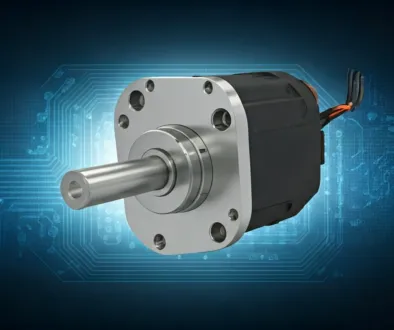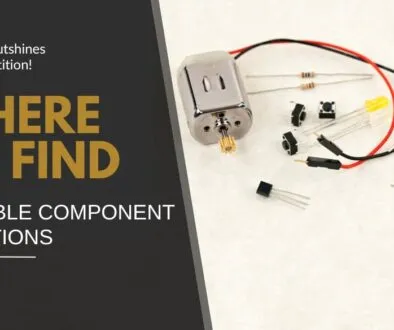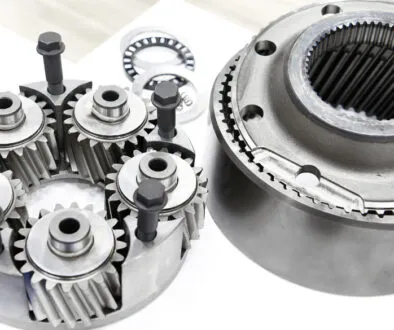Everything You Need to Know About Electric Motors
Electric Motors
If you’ve ever wondered about the key elements that make your gadgets tick, you’re in the right place! This page will demystify electric motors, the invention powering everything in our daily lives from kitchen blenders to electric cars.
We’ll look at their functions, explore the various types, and break down their structure in simple, understandable terms.
Whether you’re a seasoned engineer, tech enthusiast, curious learner, or looking for a refresher, this comprehensive guide will serve as a useful resource.
What is an Electric Motor?
An electric motor is a powerful device that converts electrical energy into mechanical energy. It’s the core component of many machines, from electric cars to home appliances. This compact, energy-efficient brilliant bit of engineering makes our high-tech world possible.
Parts of an Electric Motor
There are seven major components that make up an brushed electric motor:
-
Stator
As the name suggests, the stator is the ‘stationary part’ of the motor. It plays a dual role: it provides a stable platform for the rotor to spin and generates a magnetic field that interacts with the rotor’s magnetic field.
The stator frame carries the permanent magnets that the rotor interacts with. They are attached with adhesive or fasteners in a precise pattern, alternating magnetic poles to generate smooth and continuous rotation.
The stator is usually a hard metal that forms the outer shell of the motor, providing a protective cover for all the internal components.
-
Rotor
Also known as the ‘rotating part’, the rotor is the spinning portion of the electric motor. It is an assembly of the windings, armature, shaft, and commutator. This is where the motor that converts the electrical energy into mechanical power.
The rotor houses the electromagnetic parts of the motor. Working with other parts of the device, a force is magnetically induced and the rotational energy passed along to the shaft.
-
Windings
Windings are coils of wire meticulously wrapped around the core of the stator or the armature.
When electricity is applied, these coils become electrified, creating an electric field that interacts with the magnetic fields of the permanent magnets, causing rotation.
- Armature
The armature is the central part of the motor, where the winding component is stored. It’s typically located on the rotor for most DC motors, but for BLDC and AC motors it’s often found on the stator.
The armature is made of stacked pieces of metal that are precisely cut to perfectly align the windings with the magnets in the stator. The increase in precise alignment has allowed for motors to become more powerful while still being fairly small.
Coreless motors often replace this part with epoxy or resin. Learn more about Coreless Motors.
-
Commutator
The commutator is a crucial part of a DC motor. Its primary role is to energize the windings in a specific manner, changing the electric current and magnetic field so that it produces maximum torque in one direction.
This component is typically a cylindrical structure composed of several segments, with each connected to windings in the armature coil. The commutator design is optimized to work with the brushes, which are made of a conductive material; usually carbon or metal.
Without the commutator, the motor wouldn’t be able to spin, never mind convert electrical energy into mechanical energy effectively.
-
Bearings
If you ever wondered how the parts in an electric motor rotate smoothly without excess friction, then the secret lies in the bearings! They are the vital components that support the rotor and allow it to spin freely within the motor’s structure.
Typically, there are two bearings in an electric motor, one on each end of the rotor. They can either be ball or roller bearings.
They reduce friction, support loads, and maintain alignment between the various rotating parts. Modern bearings are sealed in oil This reduces wear and tear and prevents the need for replacement, keeping the motor running efficiently.
-
Shaft
The shaft is the part that connects the electric motor to whatever it needs to drive, be it a fan, a pump, a conveyor belt, or any other mechanical system.
It is the center-most part of the motor, so it spins with the rotor, transferring the mechanical energy produced by the motor to the application it’s intended for.
The motor shaft is made of iron or steel and can be machined to have a D flat, double D flat, hexagon, or spline end. The type of shaft pattern should be chosen to best suit your end application.
Each of these parts plays a significant role in the working of an electric motor. They all work together harmoniously, converting electrical energy into mechanical energy.
How Does an Electric Motor Work?
The magic behind how an electric motor works lies in the principles of electromagnetism. Electric power is connected to the rotor windings creating a magnetic field, which induces force on the permanent magnets – causing rotation.
The rotor, typically an iron core wrapped in copper wire, is designed to convert this magnetic field into a force that propels its rotation.
Electricity enters the motor, passing through the commutator, a ring-like structure. The commutator intermittently changes the charge in the windings, causing the magnetic field to shift. This shift pushes the rotor to spin continuously, thus generating mechanical energy.
But how does this spinning rotor drive a device? Well, the drive shaft is a part of the rotor. It is a component that extends out of the motor to interface with the application. The rotational energy of the rotor transfers to the shaft, which then uses this energy to perform work – be it spinning a fan, turning the wheels of an electric car, or rotating the drum of a washing machine.
Types of Electric Motors
The various types of motors are:
Direct Current (DC) Motors
DC Motors are one of the oldest and most common types of electrical motors available. They operate on the principles of electromagnetism, with a magnetic field that a current-carrying conductor produces. DC Motors are further classified into three types:
Permanent Magnet Brushed DC Motors: These motors utilize permanent magnets to create the magnetic field, which helps in improving efficiency as it doesn’t require any energy to maintain the field.
Brushless DC Motors: As the name suggests, brushless motors eliminate the need for brushes used in traditional motors for commutation. Instead, they use a controller for commutation which gives them precise speed control in applications.
BLDC motors are more efficient, have a longer lifespan, and require less maintenance than brushed motors. They are commonly used in drones, electric vehicles, and high-performance applications.
Stepper Motors: A type of bldc motor that move in discrete steps. They have multiple coils that are organized in groups called “phases.”
By energizing each phase in sequence, the motor will rotate, one step at a time. Stepper Motors are used in machines that require precise positioning, speed control, and holding torque -, such as 3D printers and CNC machines.
Servo Motors
Servo Motors are a unique type of motor used for precise control of angular or linear position, velocity, and acceleration.
They are usually a DC motor equipped with some kind of position-sensing device and a control circuit. These motors are used in robotics, conveyor systems, and automation systems.
Alternating Current (AC) Motors
AC Motors work on the principles of alternating current. There are two main types of AC Motors:
Synchronous Motors: These motors run at a constant speed, irrespective of the load. They are used in applications requiring precise and constant speed, such as clocks and timers.
Induction Motors: The most common type of AC motor. They rely on the principle of electromagnetic induction. They are robust and reliable and come in two types: single-phase induction motor and three-phase induction motor. They are larger motors used in a wide range of applications, from appliances to large industrial machinery.
Factors to Consider When Selecting Electric Motors
Choosing the right electric motor can be tricky unless you understand the key factors that play a role in their selection. Here are the top five factors you need to consider:
- Frequency: The frequency of a DC electric motor is directly proportional to its speed. Different countries have different standard frequencies, like 50 Hz or 60 Hz. Understanding the required frequency for your application ensures the motor runs at the correct speed.
- Torque: This is the force with which the motor rotates. High torque motors can drive heavier loads but often at a slower motor speed. The choice of torque rating depends on the load torque requirements of your application.
- Voltage: Voltage is the pressure that drives electrical current through the motor. Motors are designed to run at a specific voltage, and operating them at a higher or lower voltage can lead to efficiency loss or even damage. Ensure your power supply matches the motor’s voltage rating.
- Life Cycle: The life cycle of a motor refers to its operational lifespan before failure or significant efficiency drop. When selecting a motor, consider its expected life cycle in relation to the application’s duration and maintenance cost.
- Duty Cycle: This term refers to the operational time of a motor in a complete cycle. Knowing the duty cycle of your application helps you select a motor that can withstand the expected load without overheating.
- Power: Power rating of a motor defines its ability to do work over time. Higher-power motors can handle heavier loads and operate for longer periods.
At ISL Products, we manufacture reliable, value-added electric motors. Some of our products include 12VDC & 24VDC brushless DC motors, DC servo motors, stepper motors and brushed DC motors. Each motor embodies our commitment to quality and innovation. Ready to upgrade your current motor experience? Request a quote today!





